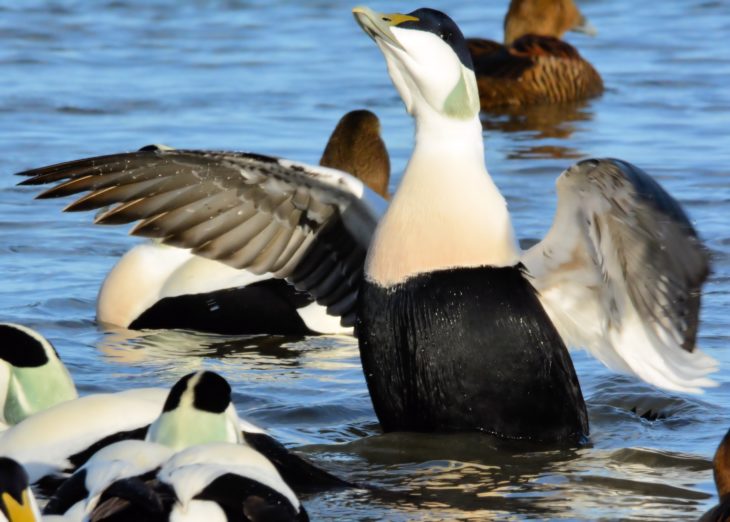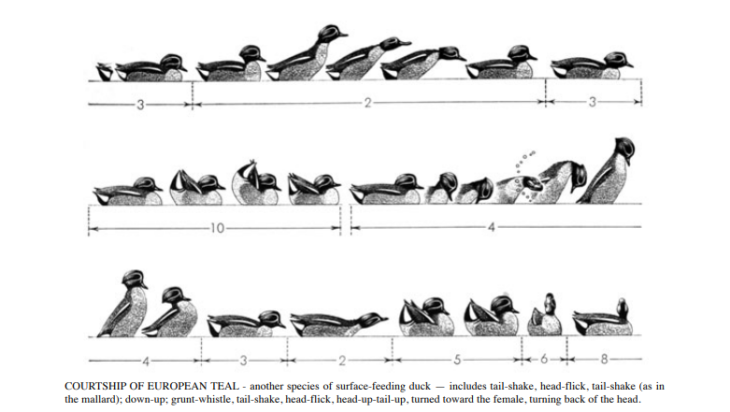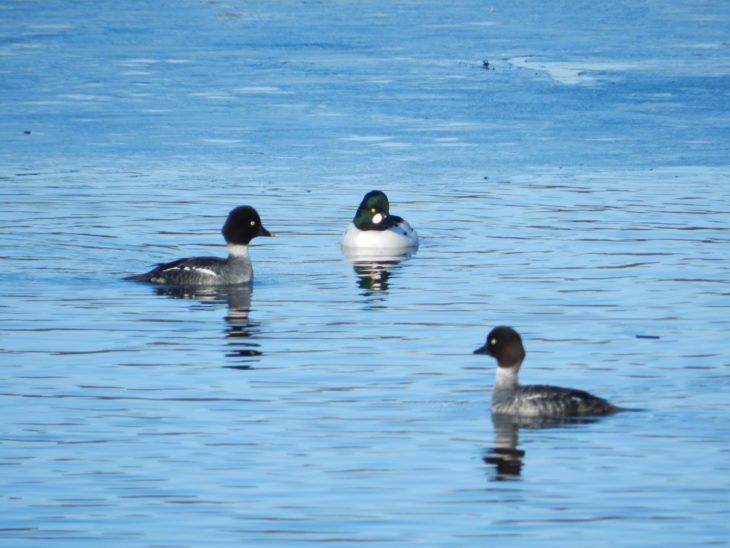Duck Displays and Signs of Spring
We’ve been noticing lots of signs of Spring these past few weeks – snowdrops are starting to crop up all around the visitor centre, the garden birds are beginning to sing much more enthusiastically, and (on the most part) the weather has been a lot more pleasant. Something else we’ve been noticing is the ducks showing off their unusual courtship displays.
While garden birds mainly sing to attract their mates, ducks tend to use what could be described as ‘dances’, and these displays vary between species (although vocalisations do play a part in mate attraction in ducks too). Pairing off throughout the winter, mallards are amongst the earliest ducks to be seen bobbing their heads to each other. Other dabbling ducks such as teal and shoveler begin forming pairs a little later (around January and February). Diving ducks, such as goldeneye, eider, and tufted ducks, pair up even later.

These courtship displays are pretty complicated! Lorenz, famously known for his studies on animal behaviour, used terms like ‘tail-shake’, ‘head-flick’, ‘down-up’, and ‘grunt-whistle’ to describe their movements, but it’s difficult to put their performances into words. Even the illustrations he included in his paper ‘The Evolution of Behaviour’ didn’t really do the displays justice. In fact, it’s very informative (and weirdly entertaining) to watch videos of different duck courtship displays online. We particularly enjoyed discovering the way shelducks show off to their potential mates, and we’re looking forward to hopefully seeing it on the basin sometime this breeding season!

The goldeneye’s dramatic courtship display is perhaps one of the most well-known – the males extend their neck and flick their heads right back against their bodies (a ‘head-throw’). The tufted duck’s display is a little similar to this, but more rapid. Red-breasted mergansers display using an unusual combination of stretching and flicking – some birdwatchers describe it as ‘saluting’. Shoveler have quite a unique courtship display – they submerge their bills in the water and twist and turn in circles together, kind of like a strange synchronised swimming performance.

So why do ducks have such a huge variety of different, complex courtship displays? It seems that species recognition might play a large role. Because multiple species of duck tend to gather together in small areas to breed, it’s to their advantage to have very distinctive, easily recognisable displays when attracting mates – this helps avoid hybridisation (mating between ducks of different species), something that seems to happen quite a lot in ducks. Species of duck with similar courtship displays will experience more hybridisation, while species of duck with very different displays will experience less.
So while you’re out enjoying the beginning of Spring in the coming weeks, keep an eye out for different duck species and their interesting attempts to attract mates. Here at Montrose, we’ve been seeing a huge range of duck species from our visitor centre windows – eiders, tufted ducks, pintails, shovelers, and goldeneye just to name a few! From Monday 12th February onwards, we’ll be open 7 days a week, 10.30am-5pm, so the Montrose Basin Visitor Centre may serve as the perfect place to observe this entertaining bird behaviour as we begin to enter Spring.
– Joanna Peaker (Visitor Centre Assistant)
Help protect Scotland’s wildlife
Our work to save Scotland’s wildlife is made possible thanks to the generosity of our members and supporters.
Join today from just £3 a month to help protect the species you love.
Preface
We’ve been noticing lots of signs of Spring these past few weeks – snowdrops are starting to crop up all around the visitor centre, the garden birds are beginning to …
